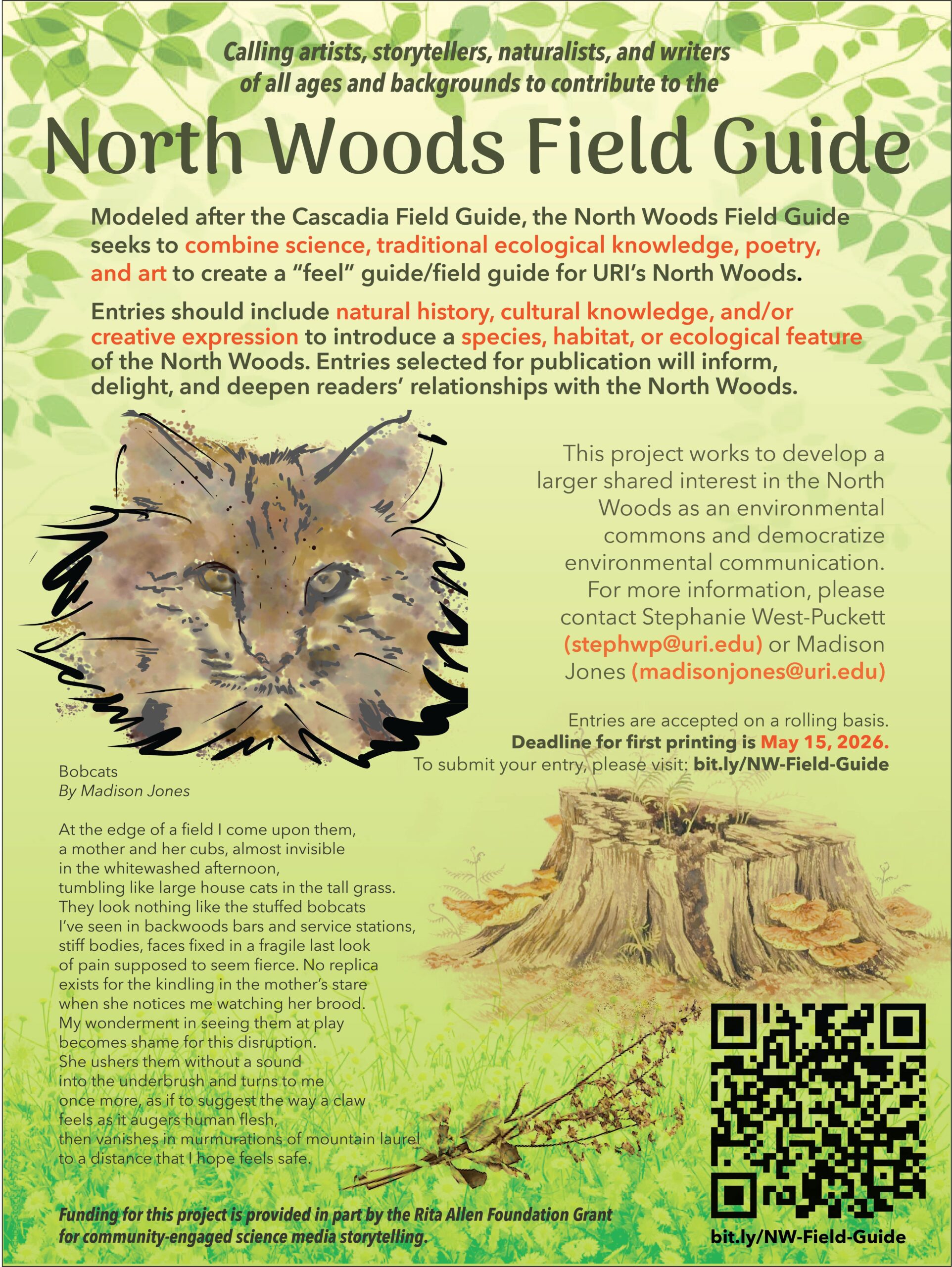In partnership with ecoRI, a local news source focused on climate and social justice, the DWELL Lab is creating a North Woods Field Guide as part of their larger initiative–the North Woods Project. This new partnership will bring together environmental journalists, science storytellers, community members, and students at the University of Rhode Island to create a multimedia field guide for URIs North Woods. We are calling for submissions of creative, scientific, and artistic representations of North Woods. The North Woods Field Guide (NWFG) will be organized around specific species and habitat, so please focus your entry on a specific area or member of the community.
The NWFG is modeled after the Cascadia Field Guide, a place-based collection of art, poetry, and stories of the Cascadia bioregion in the Pacific Northwest. While most field guides assist humans in plant and animal identification based on appearance, the Cascadia Field Guide attempts a deeper depiction of the Cascadia ecological system.
As the editors note, “a drawing or poem might not tell you the average life span of Steller’s Jay, but it tells you how you might feel to have Jay on a branch by your shoulder. A painting might not offer the identifying field marks of Eulachon, but it may give you a sense of what it means to shimmer up a river” (15-16).
To submit, visit: https://bit.ly/NW-Field-Guide
Submit your field guide entry via submittableBy combining traditional ecological knowledge, scientific research, and cultural presence, the North Woods field guide becomes a holistic compilation of knowledge. When disciplines seen as vastly different are placed right beside each other, their boundaries dissolve, and all information becomes invaluable. The North Woods field guide strives for a more encompassing approach to ecological knowledge– one that scientific research, with its limits of measurement and accuracy, often doesn’t fully express. This approach sees beyond the physical value of an ecology and its relation to humans.
After years of under use, the North Woods has become a teaching forest and site for field research at URI. When exploring the dense undergrowth, you can see colonial era stone walls peek out of the foliage alongside a former antique landfill–evidence of the Forest’s status as a Superfund site. The North woods has morphed many times over the centuries, and the Field Guide brings users through this extensive timeline through stories, art, and research. Through this guidebook, one can understand the layered histories, and how all past events and human presence contributes to the current state of the ecosystem. The trash has been enveloped by foliage, becoming part of the forest and dissolving the mirage of artifice vs natural.
This past October, DWELL joined the National Park Service and National Writing Project to host their annual Write Out event. Participants were guided through scientific and poetic writing centered around the North Woods environment while DWELL gathered entries for the NWFG. Through this reciprocity, participants actively contributed to the guide, transforming it into a communal effort and creative compilation.
The field guide, in its final form, will be available in both print and digital formats, allowing for anyone to learn about and experience the North Woods. When used in conjunction with exploration of the forest, the field guide becomes an augmentation– an expansion– of human perception through multimedia expression of information.

